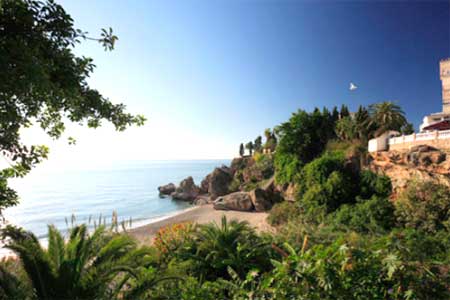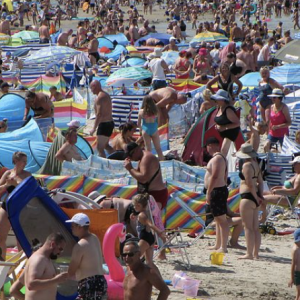If you’re planning a villa holiday this summer, then you won’t find a better destination than the Costa del Sol. The area has it all: sun, sand, sea, fantastic food and welcoming locals. No wonder it’s the UK’s holiday destination of choice. But the Costa del Sol is a big place, so which destination should you choose? Well, everybody has their own personal preferences, but we think you won’t go far wrong if you choose to visit Nerja. Over the course of the next couple of articles we’ll give you all the information you’ll need to know about this fantastic destination.
Nerja, on the Costa del Sol, is a lovely Mediterranean resort with sandy coves sheltered by the impressive Sierra de Almijara Mountains. It’s often referred to as ‘the jewel of the Costa del Sol’, and it’s easy to see why. Nerja’s temperate climate means it’s an ideal place to visit at any time of year. What’s more it’s very conveniently located. Nerja is only 53 kilometres east of Malaga, and is only a 40 minute car or bus journey from Malaga airport.
History
The area around what is now Nerja was first inhabited during the early Palaeolithic age. Evidence of early settlement has been found at the Nerja Caves from 25,000 years ago. The first significant settlement in the area was by the Phoenicians, a nation of traders from the eastern end of the Mediterranean. Settlements were established somewhere between 1,000 and 800 BC in the regions we now know as Frigiliana, Almuñecar , Cadiz and Malaga. These settlements formed part of the commercial route that was known as Bástulo-Fenicia. Phoenician domination of the region lasted for around 500 years.
The Phoenicians were superseded by the Carthaginians, the Romans and the Visigoths who ruled in turn until the end of the 6th century. During the 7th century the Moors invaded the Iberian Peninsula and maintained control over the region for several centuries. It was during this period that Nerja, or Naricha/Narija as it was known, was founded. In Moorish the name means ‘rich in water’.
Eight centuries of Moorish rule was ended by the re-conquest of Spain by the Catholic monarchs Isabella and Ferdinand. Fortifications were built in the area, the first being ‘Castillo Alto’, a stronghold designed to keep at bay the marauding pirates of North Africa. This was followed by the Balcón de Europa, formerly known as ‘La Bateria’, and to the west, ‘La Torre de los Guardas’. Houses began to be built around the forts and the new town of Nerja was born.
At the beginning of the 19th century the town had a population of about 7,500 inhabitants, and an economy based on the export of wines, raisins, wood and sugar. After the Spanish Civil War, cooperative communities were created and the main industries became the production of sugar and sugar cane honey. The ‘rediscovery’ of the region’s caves brought Nerja to the attention of the tourist industry. It has since consolidated its position as a popular and attractive tourist resort, and now is home to a population of roughly 25,000, a quarter of which are foreign residents.





